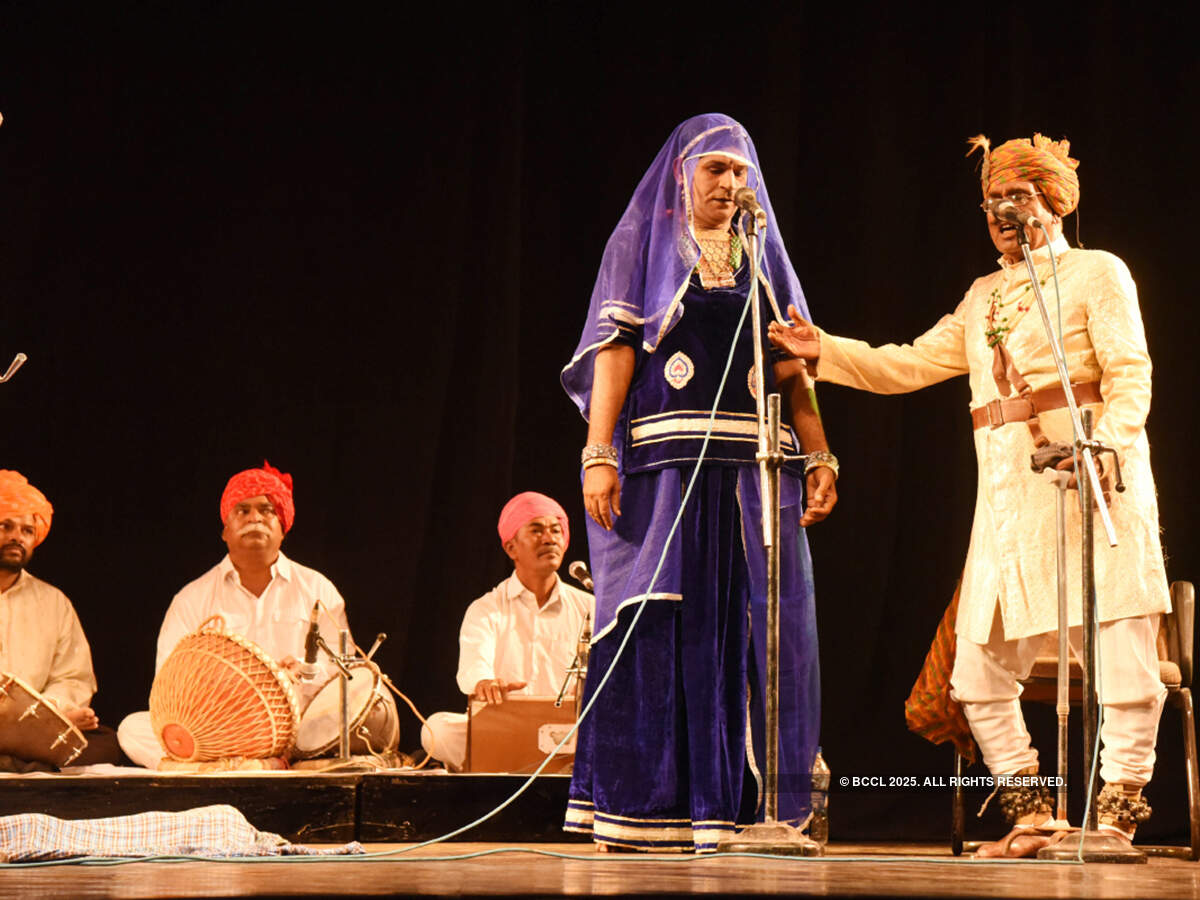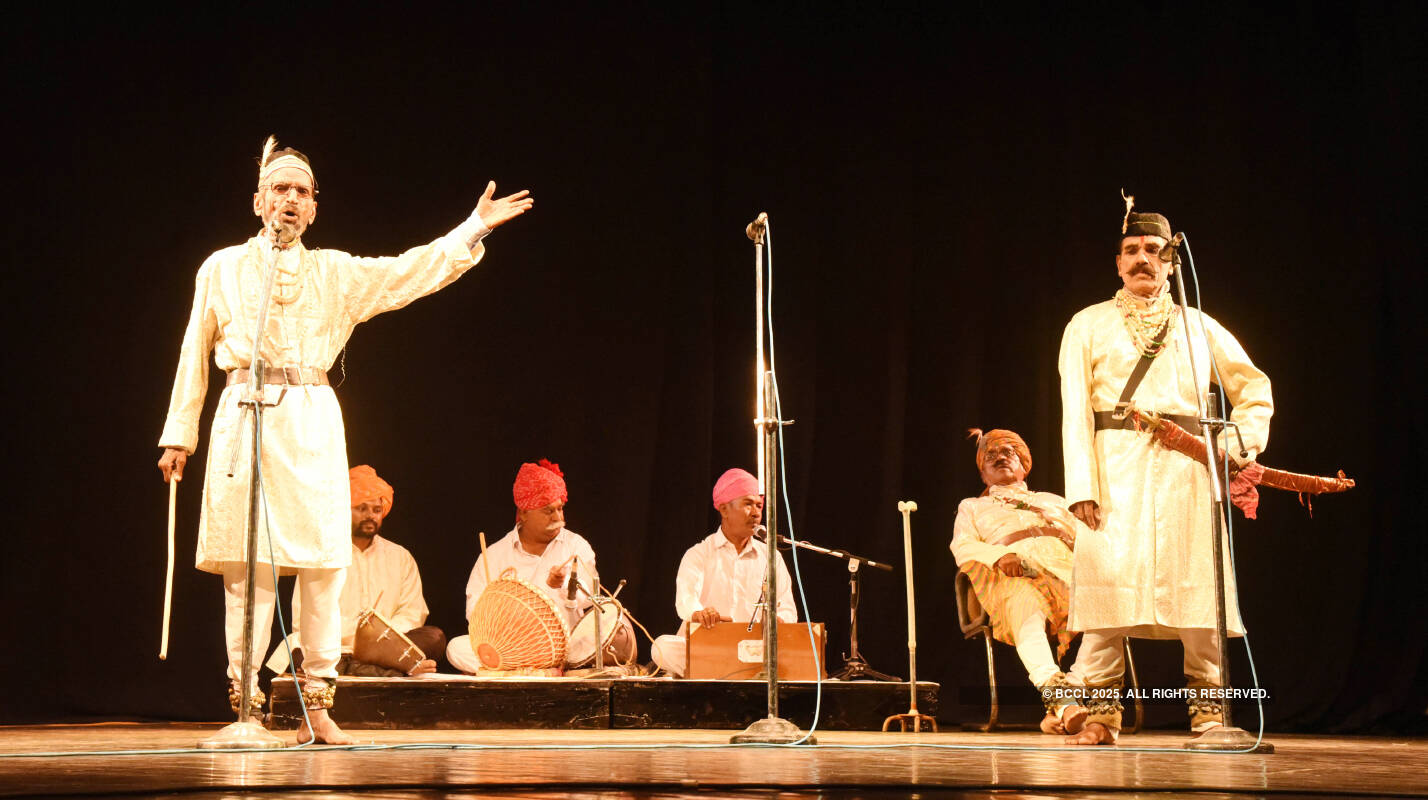Introduction

Folk art forms have always been integral to understanding the traditions, stories, culture, and beliefs of any field. They provide intensive insight into the everyday life of local communities, their rich folklore, valor and sacrifice stories, and their religious beliefs.
One such famous folk art form of Rajasthan is Khayal. Khayal, which means “thought” or “imagination” in Hindi, is the form of a vibrant and expressive folk theater that arises from Rajasthan, India. This art form weaves elements of dance, drama, music, and satire together, which reflects the rich cultural tapestry of the region.
The origin of the art form

While its accurate origin is the subject of scholarly debate, Khayal has emerged in the 18th century and developed over time to become an important cultural tradition, especially among the Bhavai community. The roots of Khayal are deeply inherent in the rural landscape of Rajasthan.
Initially, it served as a medium to tell the story, where the artists implemented mythology, historical events, and social stories. Over time, the thoughts developed into a more structured form of theater, including various regional styles and effects. The Bhavai community, known for its dramatic skills, played an important role in the development and conservation of the thoughts.
Music and dramatic elements

The center of the idea contains its music compositions, which are usually based on classical ragas. Performance is characterized by mutual activity of music and dialogue, with verses that narrate the story to singers. Dialogue is often given in a poetic, rhythmic manner, which contains traditional equipment such as harmonium, tabla, and dholak.
The dramatic aspect is equally important, in which artists use expressive body movements, costumes, and makeup to bring artists to life. The stage setup is minimal, which is often set in open places, which allows for intimate relationships between artists and audiences.
Performance and participation

Performances are mainly performed by men of the Bhavai community. This artist These artists are skilled in dance, acting, and statement, allowing them to portray a wide range of characters with authenticity and nature.
In particular, women do not participate in Bhavai dance, maintaining traditional gender roles in this art. Artists undergo rigorous training to master the nuances of Khayal, ensuring the preservation and broadcast of this cultural heritage. Khayal thus forms a part of Rajasthan’s culture heritage and its rich history of valour, bravery and sacrifices.
Regional variations
There are many regional forms of thought, each of which has unique characteristics:
Kuchamani Khayal: Originating from Kuchaman, this style is known for its humor and satirical materials, which often address social issues.
Shekhawati Khayal: Developed in the Shekhawati region, it is characterized by its classical music and wide performances.
Jaipuri Khayal: Performed in Jaipur, this style has female roles played by women, separating it from other forms where male artists take female characters.

Hela Khayal: A major form of Khayal, Hela Khayal is known for its competitive performances, where various mandals present musical satire on various social and political issues. These performances are held over several days, presenting the artists to a big audience with their creations, which reflect community engagement with contemporary concerns. Lalsot in Dausa, Rajasthan, is famous for hosting one of the most prestigious Hela Khayal competitions.
Themes and stories
The subjects of the idea are diverse, including mythological stories, historical events and social issues. Stories are often attracted to Hindu epics such as Ramayana and Mahabharata, which reflect stories of valor, devotion and morality.
Additionally, this idea serves as a platform for social comments, in which corruption, injustice and social norms address contemporary issues. The use of satire and humor not only makes these performances entertaining, but also makes ideas.
Shape in thought

The motifs are decorative symbols or patterns that express cultural identity and meaning. In the context of Khayal, they appear in costumes, stage backgrounds, manuscript pictures, puppets and wall paintings.
1. Royalty and Rath (chariot), sword (sword), dhal (shield): Symbol of valor, depicted in thought, reflecting brave characters. Crowns, Elephants indicate kings, emperors and divine figures, often the central theme of plots.
2. Flowers and nature motifs Lotus (Lotus), Kalash, Creepers: Purification, is a symbol of divine grace and prosperity. When painting epics like Ramayana or Mahabharata, time represents the cosmic chakras.
3. Divine and mythological symbols: Krishna, associated with love and beauty, common in devotional performances. Trishul, Chakra etc. are also represented when the mythological narratives are depicted by incorporating gods like Vishnu, Shiva or Goddess.
4. Geometric pattern (window arches), forged patterns: For stage designs and pictures to create depth and links for Rajasthani architecture. Circular patterns like Mandla often form the basis for props, costumes, or stage layouts.
5. Human and animal figures : Artists styled in vibrant costumes and these can be painted in murals paintings or can be painted in manuscripts related to Khayal stories. Horses, camels, and birds are Common in desert learning and epic journeys shown in Khayal plays.

The idea takes a mirror for the social values and concerns of Rajasthan. Through its performance, it reflects the collective consciousness of the community, addressing issues that resonate with the audience.
Adopting contemporary subjects as art promotes a sense of unity and cultural identity, preserving traditional narratives. In addition, the idea plays an important role in the oral transmission of history and culture, ensuring that stories and traditions are passed through generations.
Contemporary relevance
In the modern era, Khayal faces challenges due to large-scale media arrival and changing entertainment preferences. However, efforts are being made to revive and maintain this traditional art form.
Cultural organizations and enthusiasts are working towards preserving the authenticity of Khayal by adapting it for contemporary sensibilities. Parties include organizing festivals, workshops, and demonstrations, which demonstrate the prosperity of Khayal, ensuring its continuous relevance in the cultural scenario of Rajasthan.
Conclusion
The idea stands as a will for the rich cultural heritage of Rajasthan, which embodies the artistic expressions, social values and historical narratives of the state. Through its complex mixture of music, dance and drama, the idea continues to fascinate the audience by offering a window in the soul of Rajasthan. As long as the storytellers are ready to breathe life in their stories, the thoughts will bear, preserving the traditions and stories of an era for future generations.
References
https://www.indianetzone.com/khayal_dance




